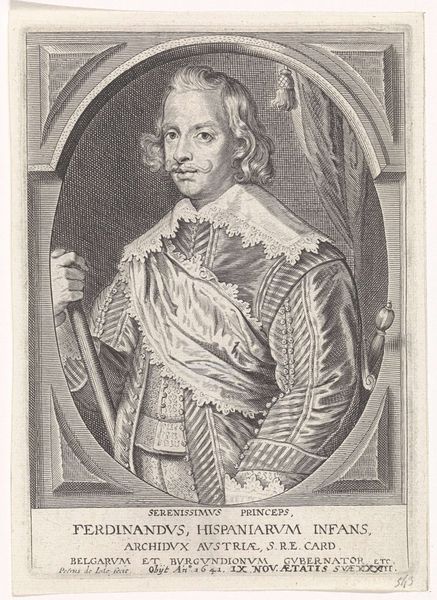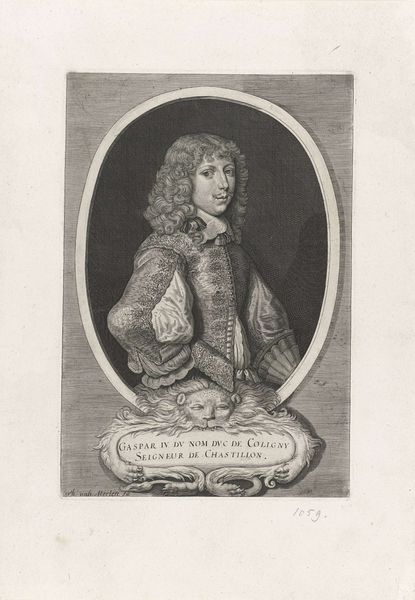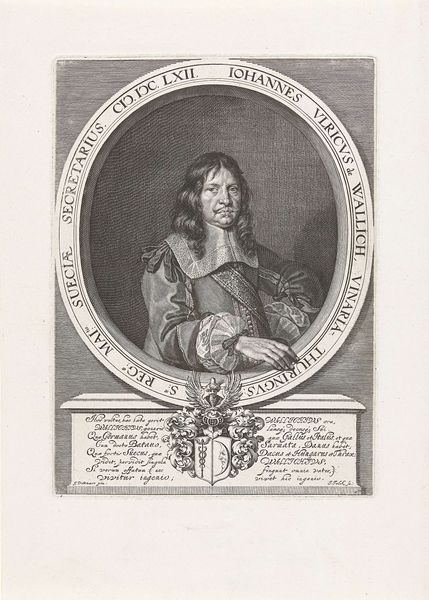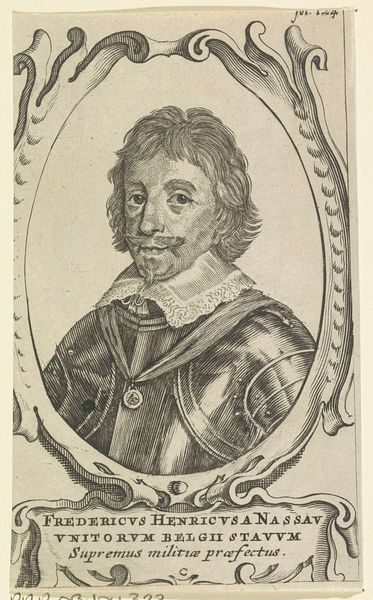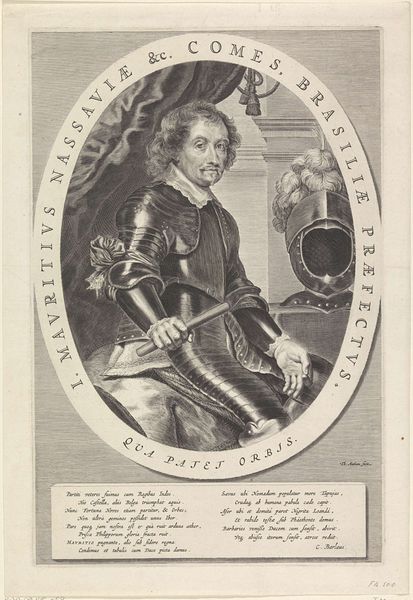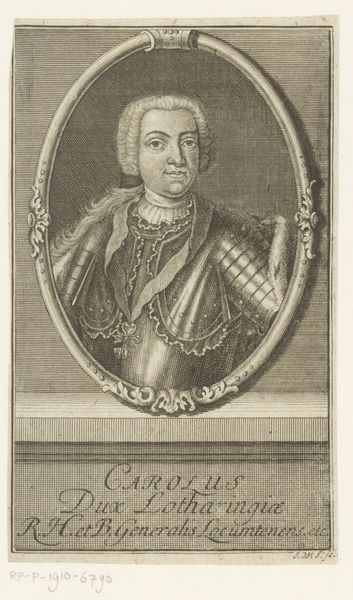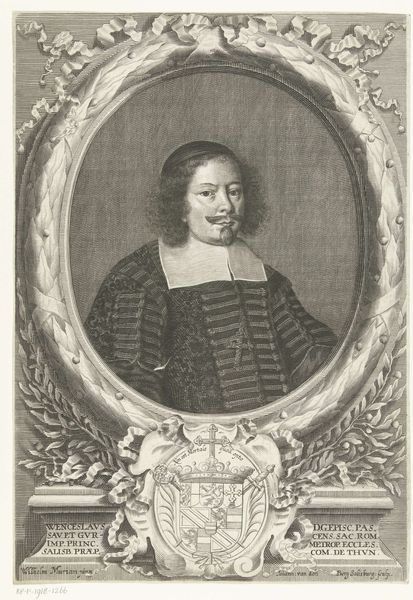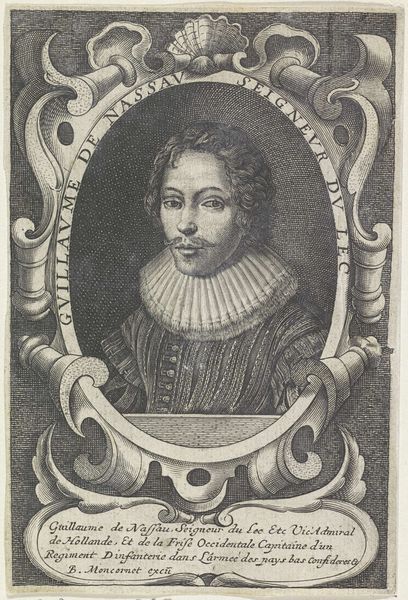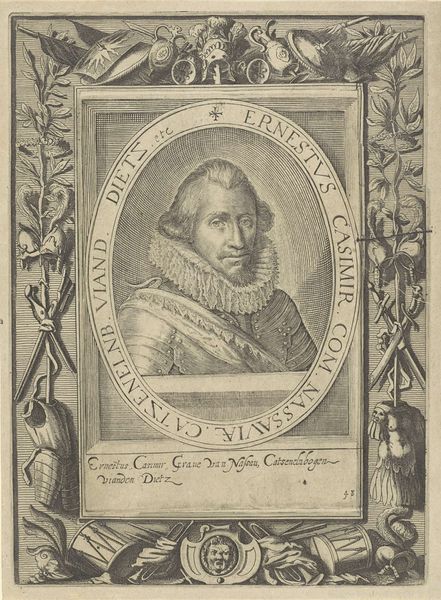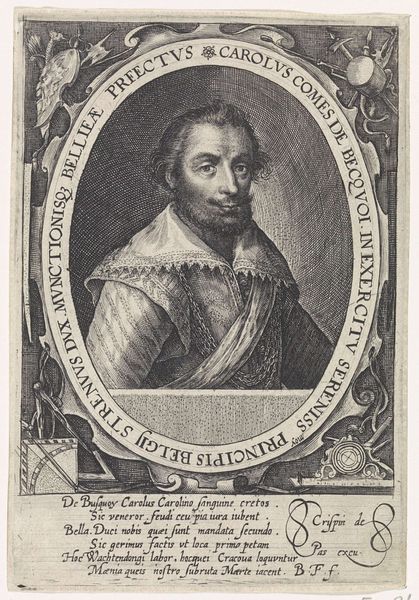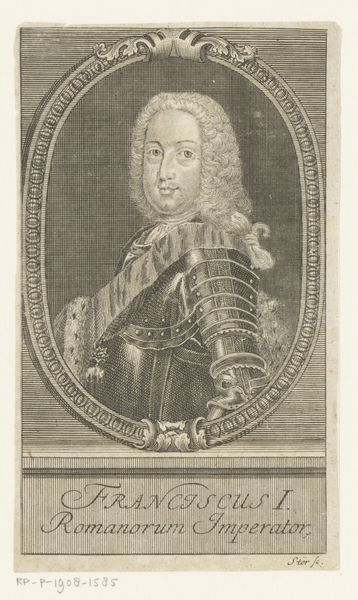
engraving
#
portrait
#
baroque
#
old engraving style
#
figuration
#
portrait reference
#
limited contrast and shading
#
line
#
portrait drawing
#
history-painting
#
northern-renaissance
#
engraving
Dimensions: height 88 mm, width 68 mm
Copyright: Rijks Museum: Open Domain
Curator: This is a striking engraving from 1624, "Portret van Theodoor van Zuylen," by Magdalena van de Passe. It resides here at the Rijksmuseum, offering a glimpse into Dutch society of that era. Editor: My immediate impression is one of formality, and a hint of vulnerability. The oval frame almost feels like a protective shell, doesn't it? There's a definite stillness to his gaze. Curator: The portrait encapsulates the artistic conventions of the period. Van de Passe came from a renowned family of engravers, instrumental in disseminating images and shaping public perceptions. Portraiture was a key component of establishing status for the upper-middle class at this time. Editor: And within that structured formality, the details intrigue me. The coat of arms at the bottom, the almost baroque lettering spiraling around the frame... They're symbols, visual anchors for identity, family, and perhaps ambition. It is such fine, detailed line work. Curator: Precisely. The symbols underscore van Zuylen's lineage and his position within the socio-political fabric. Note the Latin inscription that serves as an introduction around the figure. It is "Gnos D. Theo de Zulen Vander Haer...". What does it say to you about Theodoor van Zuylen himself? Editor: The way light catches the elaborate ruff around his neck, for instance, draws the eye immediately. That stark white linen stands out so dramatically in this monochromatic portrait. Its an image of refined status, obviously. A delicate detail against the rigid presentation, what stories is that garment design telling? Curator: That ruff, undeniably, declares a degree of affluence and a commitment to following fashion. I believe there’s an undercurrent here hinting at his place in civic society. His serious facial expression mirrors a sense of duty to uphold the dignity and integrity of a prominent citizen within the larger narrative of that time. Editor: This goes beyond mere likeness. Van de Passe imbues him with an almost introspective air, as though she's capturing not just his outward appearance, but also an inner world. The contrast in this style of limited shading lends itself to something profound being revealed. Curator: Exactly. So, whilst the visual trappings may at first point to societal positioning and class, it's clear that Van de Passe allows a characterization and, indeed, the suggestion of personality into the historical record of Mr. Van Zuylen. Editor: I am moved by what seems an almost humble statement about our relationship to legacy. So, while the artwork presents Van Zuylen’s existence to posterity, he too becomes a potent image speaking beyond its historic value.
Comments
No comments
Be the first to comment and join the conversation on the ultimate creative platform.
